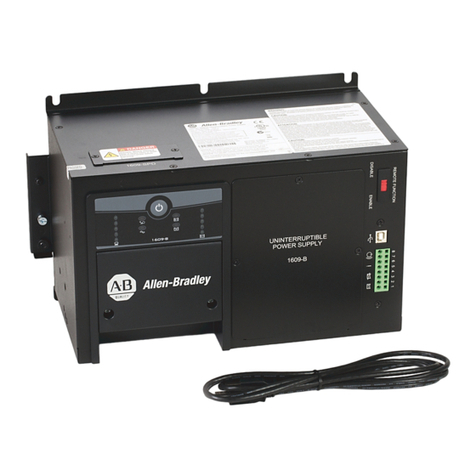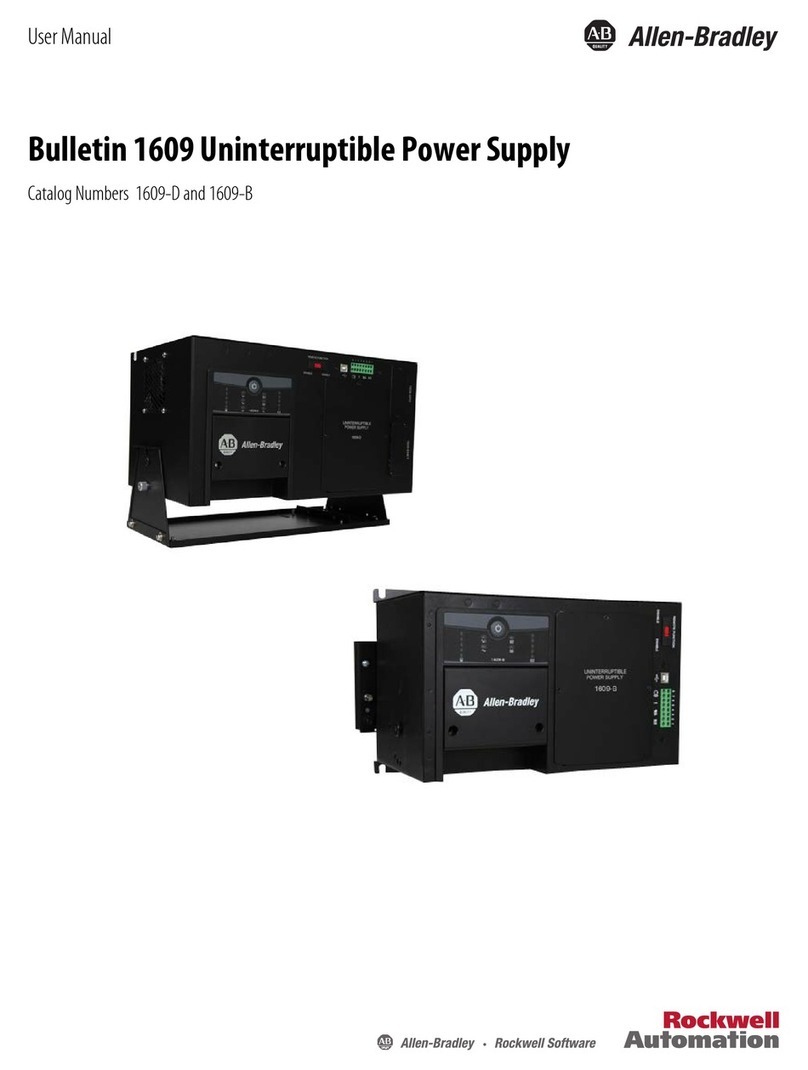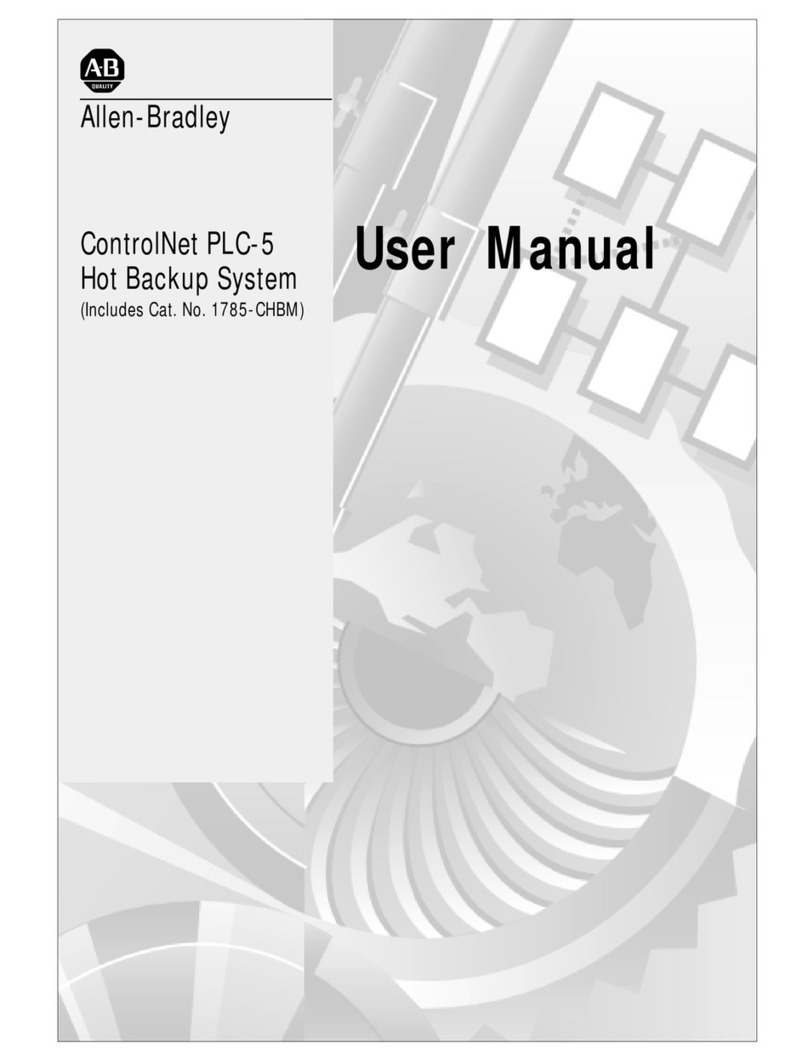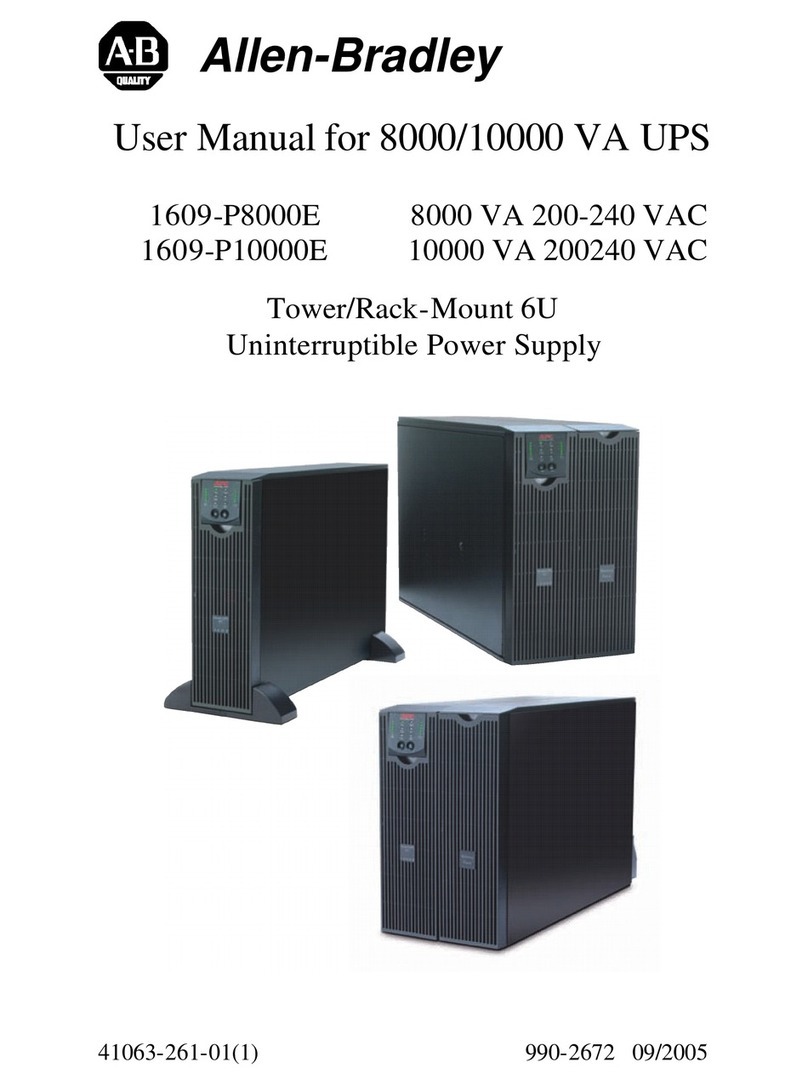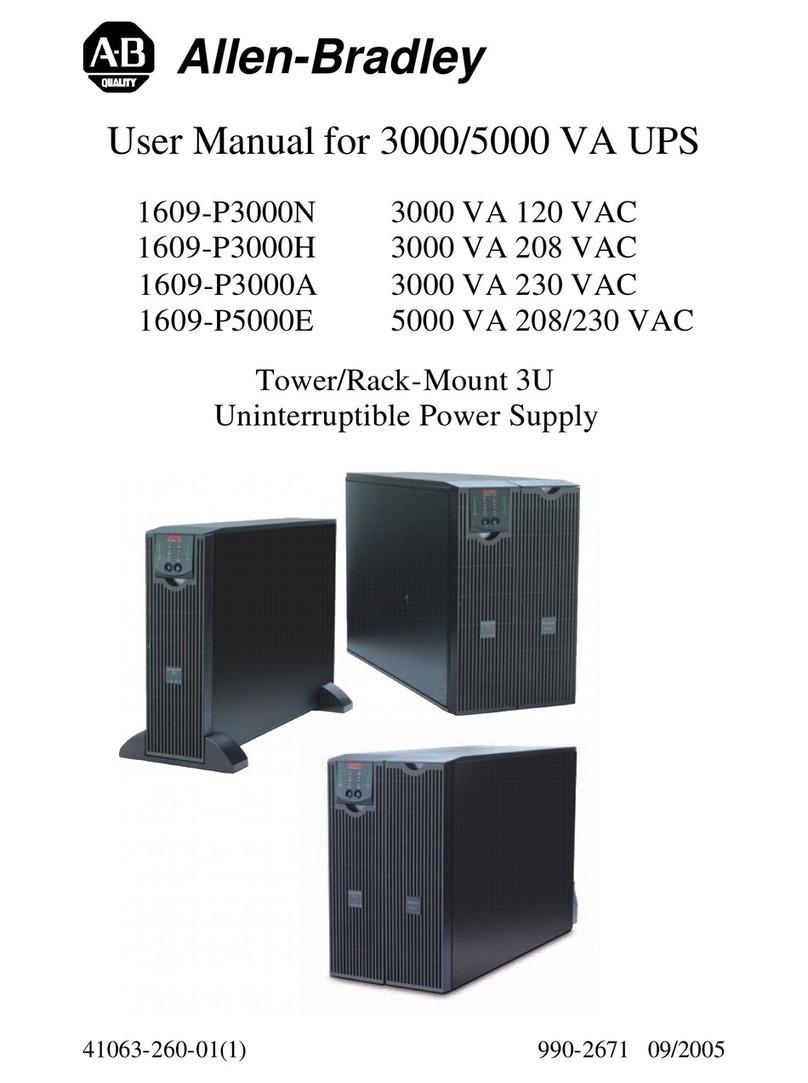
Rockwell Automation Publication 1606-RM008A-EN-P - November 2021 7
DC-UPS - 24V, 20 A, 480 W Reference Manual
• Install the device onto a DIN rail according to EN 60715 with the input
terminals on the top of the unit.
• The input can be powered from a regulated power supply or a similar DC
source. The voltage between the input and ground must not exceed
60V DC continuously. The ripple voltage in the low frequency range
between 50 Hz and 10 kHz must be negligible when used in marine
applications.
• The input must be powered from a PELV or SELV source or an “Isolated
Secondary Circuit” to maintain a SELV or PELV output.
• Use an appropriately sized 24V power supply, which can deliver the
additional internal current consumption, required to charge the battery.
• Use only VRLA lead acid batteries with a capacity between 3.9 Ah and 150
Ah.
• Check for correct input and battery polarity. The device will not operate
when the voltage is reversed.
• Make sure that the wiring is correct by following all local and national
codes. Use appropriate copper cables that are designed for a minimum
operating temperature of 60 °C for ambient temperatures up to +45 °C, 75
°C for ambient temperatures up to +60 °C and 90 °C for ambient
temperatures up to +70 °C. Confirm that all strands of a stranded wire
enter the terminal connection.
• Do not use wires smaller than 4 mm2(AWG 12) and not longer than
2 x 1.5 m between the battery and the DC-UPS controller. Longer or
smaller gauge wires can change performance of the system.
• Use a 35 A fuse (ATOF® 287 035 from Little fuse or an UL Listed fuse with
the same characteristics) in the battery circuit. The battery fuse protects
the wires between the battery and the DC-UPS and shall be located close
to the battery.
• The device is designed for pollution degree 2 areas in controlled
environments. No condensation or frost is allowed.
• The device is designed as “Class of Protection III” equipment according
to IEC 61140.
• The enclosure of the device provides a degree of protection of IP20.
• A disconnecting means shall be provided for the input and the battery
input of the device.
• The device is designed for convection cooling and does not require an
external fan. Do not obstruct airflow and do not cover ventilation grid.
• Keep the following minimum installation clearances: 40 mm on top, 20
mm on the bottom, 5 mm left and right side. Increase the 5 mm to 15mm
in case the adjacent device is a heat source. When the device is
permanently loaded with less than 50%, the 5 15 mm can be reduced to
zero.
• The device is designed for altitudes up to 6000 m (19,685 ft). See
additional requirements in the product data sheet for use above 2000 m
(6560 ft).
• The maximum surrounding air temperature is +70 °C (+158 °F). The
operational temperature is the same as the ambient or surrounding air
temperature and is defined 2 cm below the device.
• The device is designed to operate in areas between 5% and 95% relative
humidity.
• The device is designed, tested, and approved for branch circuits up to 28
A without additional protection device.
• Use a 25 A melting fuse with a melting I2t of 400A2s – 1500A2s or a 25 A
circuit breaker with tripping characteristic B, C, D, or K on the input of
the DC-UPS if the current of the power supply is higher than 28 A.
